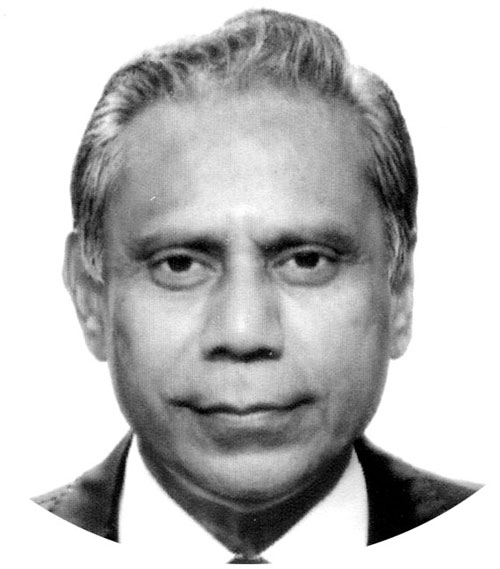Japan’s Fukushima dilemma, worrisome for ecologists
ON the eve of the Paris Summit on Climate, Japanese Prime Minister Yoshihide Suga on 13 April announced that Japan will release 1 million tonnes of the tritium-containing wastewater from the retired Fukushima Daiichi Nuclear Power Plant into the Pacific Ocean in about two years.
The Japanese government’s shocking disclosure came in defiance of the appeals from nearly all sensible governments and environmental bodies around the globe.
The world is cognizant of the disaster in the wake of the Fukushima catastrophe but the decision of the Japanese government has appalled all and sundry.
The dilemma of the Japanese authorities is understandable that it is running out of storage facilities for the vast amount of water needed to cool down the disused nuclear facility over the last decade.
The International Atomic Energy Agency (IAEA) may have given the nod to the Japanese plan, with the statement that the action is commonplace and harmless, ecologists around the world are aghast at the deadly aftermath of the action by Japanese nuclear power plant executives.
Japan, of all the countries of the world, is the only one which faced the trauma of a nuclear weapons’ strike on the cities of Hiroshima and Nagasaki on 06 and 09 August 1945 respectively, during World War-II.
Hundreds of thousands of people died both instantly and in the aftermath of the attack as a result of the massive amount of radioactive heat released into the atmosphere. The deadly after effects continue to traumatize the population of both the cities.
The nuclear weapons used by the USA, which brought Japan to surrender and thus cease the Second World War, were known as “Little Boy” and “Fat Man”.
“Little Boy” was a plutonium-239 implosion bomb that dropped on Hiroshima detonated with an estimated 15,000 tons of TNT.
“Fat Man,” the bomb dropped on Nagasaki held 21,000 tons of TNT. The duo contaminated the earth, water supply and the food chain in the cities.
Long-term health effects of the atomic bomb like cancer and birth defects were also recorded among the atomic bomb’s survivors.
The nuclear meltdown that occurred in Fukushima on 11 March 2011, rekindled the terrors of the nuclear strike of 1945.
The contaminated water, which Japan wants to dispose of, is a by-product of the nuclear Fukushima Daiichi Power Plant nuclear accident on that fateful date, a decade ago.
The disaster, which is rated as the most severe nuclear accident since Soviet Union’s Chernobyl nuclear plant tragedy in 1986, was caused by the Tohoku earthquake and tsunami. Japan’s National Police Agency estimated 15,899 lives were lost.
The World Bank estimated that the disaster, costing about $235 billion, was the costliest natural disaster in recorded world history.
Like the nuclear accident of Soviet Union’s Chernobyl, radioactive material was released into the atmosphere by wind and precipitation.
The radioactive material also entered the water fed into the reactors for emergency cooling, and the groundwater penetrating into the reactor.
Resultantly Japan’s immediate neighbours–DPRK, ROK, Russia and China—also faced the after-effects of the deadly disaster.
A prudent course of action for Japan would be to delay its decision of the release of the contaminated waste water and consult all its neighbouring countries because they too will face the aftermath and trauma of the contaminated water.
Japan should undertake a thorough environment impact assessment before releasing the radioactive water.
US President Joe Biden’s two-day virtual World Leaders Summit on Climate Change on 22-23 April is a suitable platform to discuss the effects of Japan’s decision.
The world recognizes the fact that the Fukushima nuclear power accident was the result of a natural calamity but the decision to carry out its decision to dump nuclear waste will lead to a manmade disaster, which can be averted.
Natural catastrophes continue to take a huge toll of human lives and property around the globe.
The effects of global warming and climate change are alarming, however, Fukushima should act as a lesson to other countries who can ill-afford to mitigate the socioeconomic costs of such nuclear meltdowns.
In a report released at the end of January 2019, Greenpeace warned that the storage of nuclear waste was now a “global crisis,” saying that several waste storage facilities are now near saturation.
The treated wastewater still contains other radio-nuclides which need further purification treatment.
The mounting radioactive waste in the country does not augur well for future generations both at home and across its borders.
More research also needs to be done on foolproof methods of completely neutralizing radioactive waste in the shortest time possible.
Japan had considered evaporating or storing underground tritium-laced water from the plant as an alternative.
However, from the perspective of cost and technical feasibility, the Japanese government decided to dilute the contaminated water and discharge it into the sea.
The release of the water into the sea has faced criticism from Japan’s neighbours but also fierce opposition from local fishermen and residents.
Japan Fisheries Cooperatives Chairman Hiroshi Kishi said he rejects Suga’s proposed release plan and demanded the government explain how it will address damage to the fishing industry.
Perhaps more thought needs to go into it before implementing the decision by the Japanese government to make the region a safe place and ensure that radiation is avoided.
—The writer is retired PAF Group Captain and a TV talk show host.










